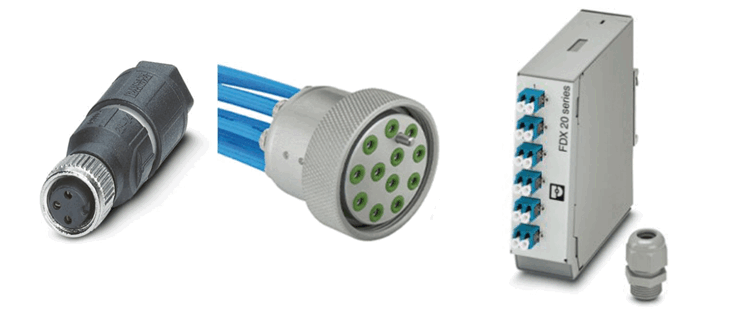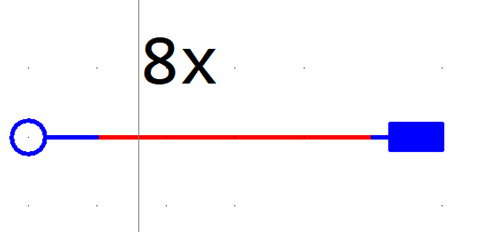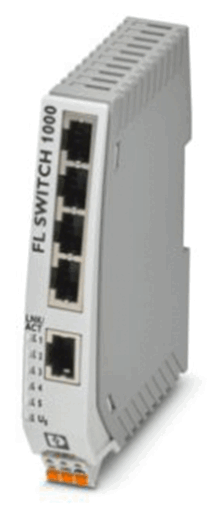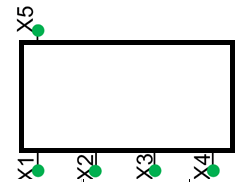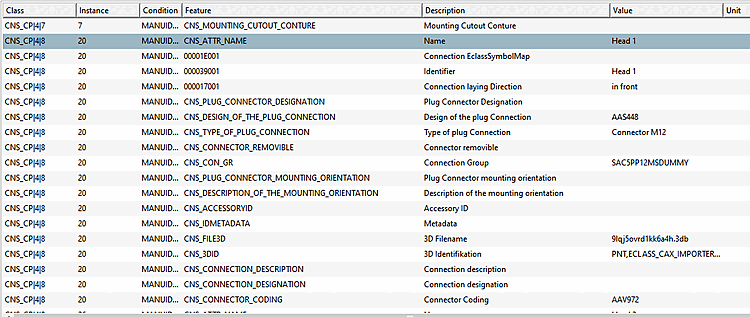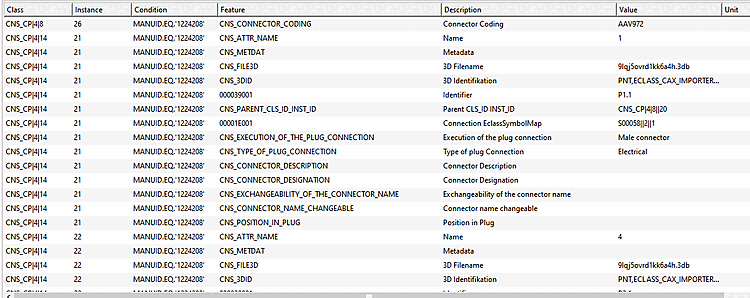This type of connection is characterized by various factors:
Hierarchical structure with the connection point of the connector and its classification itself and independent connection points and classifications of the subordinate pins ???
As a rule, the individual conductors of connectors are not accessible from the outside, which often makes it possible to model the connector with different levels of detail and, in particular, to ignore the individual pins.
Connectors are available for every engineering domain (electrical, optical, hydraulic, pneumatic, etc.)
Examples of plugs from these different domains are presented below:
The picture above shows a connector that has a typical 8-pin connector face at the front, but must be wired individually with 8 wires at the rear. Note: This connector has 16 connections, 8 at the back and 8 at the front. In this case, the individual pins of the connector are relevant. As a result, we usually get the following symbols in the circuit diagram:
The picture above shows a device with individual plugs; for the engineer there is usually no need to consider individual cables in this case. The circuit diagram is therefore based on a higher degree of abstraction, in which the individual plugs are treated like individual terminals.
As shown above, plug connections generally describe a hierarchical data structure, whereby the individual terminals/elements can be subordinated to the plug itself. In the context of the CNS classification, this makes it necessary to introduce a further CP class. This is achieved by CNS_CP|4|14 Plug connection terminal/element.
These two classes have the following attributes: (in full analogy to the ECLASS Advanced definitions)
CNS_CP|4|8; in addition to the general CAx connection attributes (see Section 5.12.9.5, “Other CAx connection types”), a plug connection has the following specific attributes:
CNS_CP|4|14; in addition to the general CAx connection attributes, a connector element (terminal/pin) has the following specific attributes:
ParentClassIdentifier (Parent CLS_ID Inst_ID); unique identifier that identifies the connector that contains this terminal. The form is mandatorily given by CNS_CP|4|8||<instance of the connector terminal>. Subsequent codes use this information to build up the underlying parent-child relationship of the connector with its subordinate pins.
Execution of the plug connention [CNS_EXECUTION_OF_THE_PLUG_CONNECTION] (connection execution) with value list (e.g. plug socket, plug pin etc.)
Domain of plug connection: Domain of the plug element (terminals) with value list (e.g. electrical, hydraulic, ...) [CNS_DOMAIN_OF_PLUG_CONNECTION];
Note that this split between the connector and its elements makes it very easy to create connectors with mixed domains (e.g. 3 hydraulic lines and 1 electrical line in a female connector).


